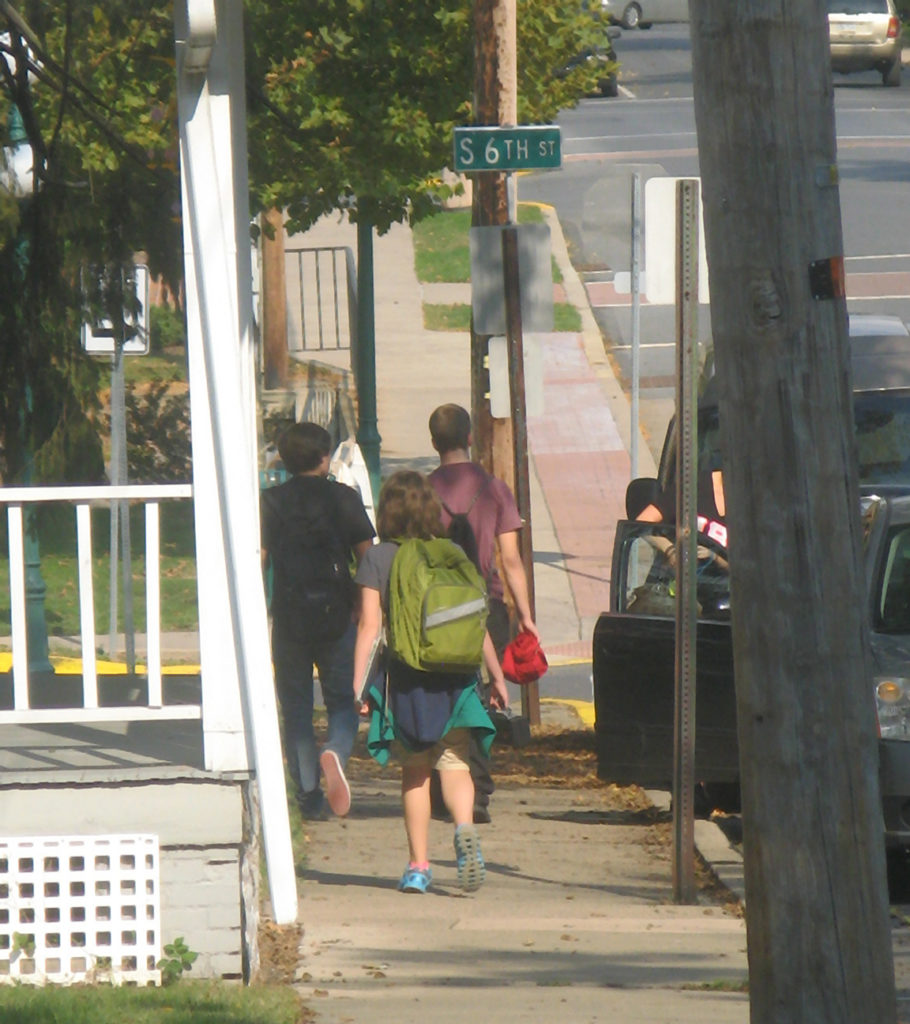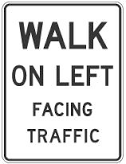Walk to School Day is coming up on Thursday, October 5. In preparation for the event, Buffalo Valley Regional Police Department Officer Brad Miller has prepared a Road Safety Presentation that will be offered at Linntown Elementary and Eichhorn Middle School the previous week. If you’d like to review what will be discussed with your family or your child will missed the refresher, here’s the gist of the assembly – less the group engagement like checking in on “How many of you have bikes? How many have bikes in working order? How many ride a bike to school regularly? How many plan to participate in Walk to School Day?” or asking for a show of hands or finding a volunteer to demonstrate hand signals…
Planning/preparation -- for biking more gear is needed, but pedestrians also need to think ahead
 What do walkers need to get started?
What do walkers need to get started?
- Sturdy shoes
- Health/fitness
- Be ready to walk a mile or so
- Permission from parents
- Knowledge about the rules of the road!
Nuts and bolts for pedestrians
- Check bags are comfortable to carry and in good shape, no holes or torn straps
- Make sure shoes are broken in
- Tie laces
- Warm clothing because it’s cooler out in the morning than you’re used to
- Bright clothing for visibility – if it’s not bright, assume you are invisible to cars
What do bikers need to get started?
- Bike
- Health/fitness
- Good riding skills or
- Permission from parents
- Knowledge about the rules of the road!
Check to be sure bike is in good condition
- Connections are tight – handle bars
- Tires pumped up and with adequate tread
- Chain not falling off or rusty
- Brakes working properly (this is a legal requirement for all vehicles on the road)
- Seat adjusted properly for you
Equipment requirements for bikes by law
- Working brakes
- At night, a front light and side/rear reflectors are required
- Rear flasher recommended but not required
- Bell or other noise-maker is recommended but not required
Gear for riders
- Helmet – required by law, check for proper fit, replace if it’s been in a crash
- Tie laces
- Eye protection can be helpful
- Warm clothing because it’s cooler out in the morning than you’re used to especially when moving through the air self-propelled
- Bright clothing for visibility – if it’s not bright, assume you are invisible to cars
Planning
- Check schedule/timing – google maps has a pedestrian option on directions which will give you a sense of the time it will take you, add some time for shorter legs
- Know your route – maybe ride it in advance -- it is likely different from the driving route
- Fuel up; have a good breakfast
- Check forecast
On the road
 How much do you know about the rules of the road already?
How much do you know about the rules of the road already?
- Which was do cars go on the road? Drive on the right
- Which way do bikes go? As vehicles, they must obey vehicle laws: ride on the right
- Which way do pedestrians go on the road? They are not vehicles, so for safety, move against traffic, walk on the left
- How about on the rail trail? Everyone stays right, walkers have right of way, bikes yield
- How about on sidewalks? No rule for walkers; bikes are sometimes allowed, they should yield
Signals
 Ask brave soul to demonstrate – left, right, stop
Ask brave soul to demonstrate – left, right, stop- Which arm is used? Left arm because it is where cars can see it, it allows you to keep your right hand on your rear brakes, and historically these are the same signals drivers used before cars had signals, with the driver’s arm sticking out their side of the car
Defensive Driving
- Definition: anticipating dangerous situations, despite adverse conditions or the mistakes of others
- Defensive Walking and Biking are similar – do not assume that others will follow the law
- Biggest concerns today on small roads: distracted drivers – do not assume a driver can see you even if they should; vehicles are more likely not to stay in lane, obey stop signs, etc.
Avoid distractions yourself
- Earbuds or headphones are illegal for those running a vehicle, including a bike
- Pedestrians and runners aren’t breaking the law if they wear them, but it’s not recommended
- If you walk or ride with others, recognize that you must concentrate still on following the rules of the road and being attentive to other traffic and conditions
Intersections –
- Look Left, Right, and Left again
- Watch for parked cars – will it pull out? is it blocking your view or you from being seen? will someone open the door and step into the street?
- Traffic signals – stop signs, lights, speed limits – also apply to bikes
- Only cross major roads like Routes 15 and 45 where there are traffic control devices provided – preferably lights and pedestrian signals, well-marked crosswalks, or, near the Bucknell campus, a pedestrian tunnel
- For other busy roads, exercise extreme caution (Fairground Rd and Route 192 have very fast-moving morning traffic)
Ask Officer Brad Miller if you have any questions or contact Walk It! Bike It! Lewisburg at elmstreet@dejazzd.com.

